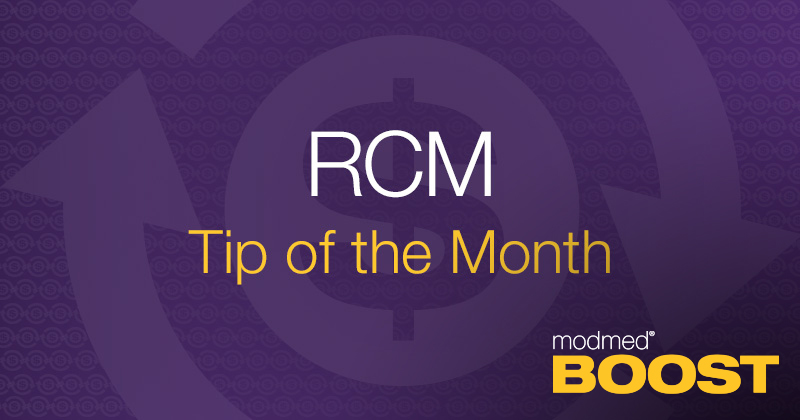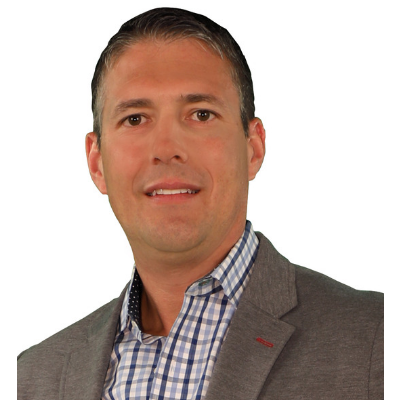RCM Tip #8: Transfer Patient Balances and Send Statements

Is your dermatology practice missing out on hard-earned revenue from patient collections?
Every dermatology practice will have some patients with remaining balances after insurance reimbursement—referred to as patient responsibility. Many practices struggle to collect these patient responsibilities. And, with the rise in high-deductible plans, patients are responsible for a larger portion of their overall healthcare costs, which means these outstanding patient responsibilities could make up a large chunk of your revenue stream.
Each month, I will provide some best practices on how to improve specific aspects of your revenue cycle, and this month I am going to focus on how to collect patient balances.
As fundamental as it sounds, some practices delay or completely overlook transferring those balances to patients, which can result in slow or lost revenue. By transferring outstanding balances to your patients and sending out prompt and clear billing statements, you can generate faster payment and collect more of what you are owed, improving your dermatology practice’s overall cash flow.
Transfer Outstanding Balances to Patients
Understanding insurance plans can be confusing, even for the medical professionals who deal with them everyday. Patients are not always knowledgeable about their health plan benefit coverage, and they may not be aware that they have a balance after their insurance provider has processed a claim.
A common complaint among patients is that they received a surprise medical bill when they thought insurance had settled their medical claim. Patient balances generally occur because they either still owe a coinsurance or deductible amount, or it’s a non-covered benefit.
The easiest way to get to the bottom of this is to reference the explanation of benefits (EOB) from the insurance company, which should provide the details of the services performed and what was charged, what is covered under the patient’s benefits, and what is remaining as the patient’s responsibility to pay. The insurance company provides an EOB to both the patient and the practice shortly after a claim has been processed.
Some practices just write off small patient balances because they think it may cost more in staff time and resources to pursue collections. However, this can be a slippery slope, and small balances can add up. Your practice should have a procedure in place to quickly assess each claim and EOB that comes back from the insurance provider and transfer any remaining balance to the patient’s responsibility in your dermatology practice management system to get the ball rolling on the patient collections process.
Send Effective Dermatology Billing Statements
 As is true with most things in life, you can’t get what you don’t ask for. The same is true for collecting on patient balances, and though it can be uncomfortable asking patients to pay you what is owed, it’s critical to do so. There are ways to make the process easier, friendlier and ultimately more successful through proactive communication and effective billing statements.
As is true with most things in life, you can’t get what you don’t ask for. The same is true for collecting on patient balances, and though it can be uncomfortable asking patients to pay you what is owed, it’s critical to do so. There are ways to make the process easier, friendlier and ultimately more successful through proactive communication and effective billing statements.
An ideal billing statement is:
- Clear – Easy for the patient to understand the total amount they owe.
- Correct – Accurately reflects the services provided and what their insurance provider did and did not cover.
- Concise – Enough detail for the patient to understand why and what they owe, but not so much information that they feel overwhelmed.
- Patient-Friendly – Simple, logical, easy-to-read design and layout. Keep in mind that patients usually aren’t medical professionals or billing specialists.
Statements should be sent monthly to all patients who have self-pay balances remaining on their accounts. Also, be sure to provide patients with a clearly stated support process, including phone numbers, whom to contact and hours to call, and make sure your staff is trained on how to read and process billing statements and how to resolve common patient questions.
Collect Patient Balances in the Office
Many dermatology practices find that they are more successful at collecting patient balances when patients are in the office for a scheduled appointment. This means front office staff must have access to the patient’s financial balance information and be trained on how to answer questions about the dermatology services rendered and their insurance benefits. The American Medical Association (AMA) offers scripts to help train your staff on how to collect patient payment at the time of service.
Asking patients for payment at the point of care can be challenging, but by encouraging an office policy of collecting patient balances upfront, it will become an accepted part of your office culture by your patients and staff. You can read more about best practices on collecting patient balances in the office in one of my previous blog posts.
How Integrated Services and Technology Can Help Bolster Patient Collections
It can be hard to keep up with the growing pile of patient balances, not to mention the time and resources needed to print and mail patient statements, perform follow-up calls, and process patient payments. If paying staff to lick stamps isn’t your idea of productivity, you should consider implementing integrated practice management technology and advanced medical billing services.
modmed® BOOST is an all-in-one solution that combines our dermatology Practice Management software and our Business Operations Services to help you address some of the most challenging aspects of your revenue cycle. We can help handle time-consuming administrative tasks and dermatology billing processes, so you and your staff are free to focus on patient care.
Here are some features of our dermatology Practice Management system that can help your staff improve your billing workflow:
- Automated insurance eligibility verification to confirm the patient’s benefits and financial responsibilities before the appointment.
- Clear copay, coinsurance and balance information that empowers staff to speak to patients about payment at check-in and checkout
- Customizable financial reports and dashboards to help you analyze insurance charges and payments, trend A/R, and keep track of patient balances
- Convenient online payment options to simplify the collections process for your patients and staff.
Dawn Fortner, practice manager at Southeastern Dermatology Consultants, shares how she has been able to improve their patient collection process with Modernizing Medicine’s dermatology Practice Management system.
As part of modmed BOOST, our dermatology billing specialists are able to handle the various parts of your billing process, including claims processing, denial/rejection assistance, A/R management and patient collections assistance. With a team dedicated to patient financial services, we mail patient statements and perform automated courtesy collection calls. We even offer an inbound billing hotline to handle patient questions and provide convenient options for patient payment processing—all to help improve patient collections and overall financial performance for your dermatology practice.
Kelly Tepedino, MD, at North Florida Dermatology shares, “When patients have a billing issue, we direct them to Modernizing Medicine’s billing hotline, and their questions are always answered in a timely manner. The modmed BOOST team provides knowledgeable explanations and resolutions, which our patients really appreciate.”
Our modmed BOOST team works within your dermatology practice management system, so you maintain visibility and control over your financial operations. From before the appointment until after the bill is paid, modmed BOOST provides a seamless dermatology billing solution that helps you save time, streamline efficiencies and gain peace of mind.





